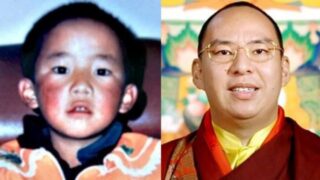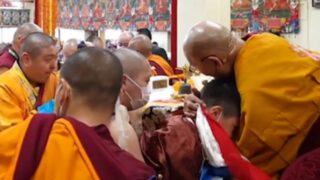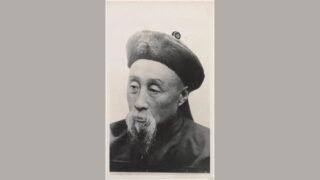Fifteen years after the suspicious death in jail of the charismatic Buddhist monk from Kham, the CCP is still afraid of him.
by Lopsang Gurung


How many in the West remember today the name of Tenzin Delek Rinpoche? Once, many in the world mobilized to save this famous Tibetan monk from execution. But this was 2002, twenty years ago. The human rights activists believed they had succeeded at least in persuading the CCP to convert the monk’s death sentence into life imprisonment. But in 2015 they learned that Tenzin Delek Rinpoche had died in jail in Chengdu for a “heart failure,” his body had been cremated, and no investigation had been performed about the causes of his death.
So famous was Tenzin Delek Rinpoche that, notwithstanding exceptional measures of surveillance after his death was announced, riots erupted in Nyachu (Ch. Yajiang) district in Sichuan province where he was born. They were repressed by the police who shot at the crowd and used tear gas. The authorities stated that 15 had been wounded, but unofficial reports claimed that several protesters had been killed. Hundreds were arrested.
Nyachu district is part of Kham, one of the historical provinces of Tibet, and was incorporated by China into its own Sichuan province. While the memory of the West may be short, Tenzin Delek Rinpoche is still very much remembered in Kham, where several relatives of the monk and other Buddhists involved in what the CCP calls a conspiracy to erect a statue to him are currently in jail.
In June 2021, the police found a statue of Tenzin Delek Rinpoche hidden in Kangding, in Garzê Tibetan Autonomous Prefecture, Sichuan province. They confiscated the statue and arrested two Buddhists. They were released but in September the police raided the home of Dolkar Lhamo, the younger sister of Tenzin Delek Rinpoche, and confiscated relics and portraits of the deceased monk.
Dolkar Lhamo and other relatives were detained and tortured. They were released in October but Dolkar Lhamo’s daughter, Nyima Lhamo, who lives in New York, now claims she is unable to contact with her mother, who has medical problems and needs urgent care. Nyima Lhamo is asking the U.S. government and international organizations to take up the case and ask that her mother be allowed to travel abroad and receive medical treatment there.
The CCP claims that several relatives of Tenzin Delek Rinpoche and others were involved in a conspiracy to erect a public statue to the monk in Sichuan. Local Buddhists explained that the statue was commissioned to artists in China but it was planned to take it to India.
Tenzin Delek Rinpoche was born in Litang, Kham, in 1950. He became a monk, and was recognized by the Dalai Lama as the reincarnation of the abbot of the Jamchen chö kor ling monastery in Litang. In the years of the “reform and opening up” after the Cultural Revolution, he was allowed to teach in Kham and build a monastery in Orthok and a school in the Nyachu district.
Tenzin Delek Rinpoche became well-known also for his promotion of traditional Tibetan medicine. However, the situation of religious liberty deteriorated in the early 21st century, and the monk clashed with the authorities because of his promotion of ecology and claims that both in Kham and in Tibet Autonomous Region the CCP was ignoring key environmental issues.
In 2001 and 2002, three bombs exploded in obscure incidents in Sichuan, two in Garzê Tibetan Autonomous Prefecture and one in the provincial capital Chengdu. The CCP claimed that a “terrorist Tibetan Buddhist group” was responsible for the bomb attacks, and that its leaders were Tenzin Delek Rinpoche and his assistant Lobsang Dhondup. They were both sentenced to death after a trial in Chengdu in 2002.
Lobsang Dhondup was executed in 2003, while the European Parliament, the United States, and several leading NGOs were protesting against what they said had been a politically motivated process based on trumped up charges. In 2005, their efforts achieved some results, as the life sentence of Tenzin Delek Rinpoche was commuted to life imprisonment.
The CCP believes that, with the passing of time, once famous prisoners of conscience are easily forgotten by the free world. Human rights organizations and the Tibetan diaspora continued to advocate for the release of Tenzin Delek Rinpoche, but the case was less and less discussed in mainline media.
Some mentioned the persecuted monk again when he died, or was killed, in jail in 2015, and riots followed. However, the CCP was never successful in erasing the memory of Tenzin Delek Rinpoche from the heart of Tibetan Buddhists. The statue incident is now being used as an opportunity for confiscating portraits of the monk wherever they are found, and arrest all those who dare to commemorate or even simply mention him.









